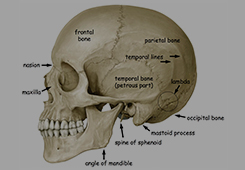Using WebEx to Enable Students to Screen-Share for Teaching Econometrics

Professor Jeffrey Zabel used WebEx in class to enable graduate students to “screen-share” with one another, as part of teaching his Graduate Econometrics class. Here he tells us about this project which was part of the 2016-2017 Instructional Technology Exploration Program (ITEP).
My project involved the use of WebEx in class to enable students to “screen-share” with one another. I used this in my Graduate Econometrics class in the spring 2017 semester. Learning econometrics can be very effective when students actually have to work directly with data, specify models, and run the regressions themselves. I believe that this activity of in-class problem-solving and screen-sharing allows for a really interactive learning environment.
Students were assigned to groups of three or four. Each group had one member with the statistical software program, Stata, loaded on their computer. This allowed each group be able to manipulate data provided to them beforehand to specify econometric models and run regressions. Through the use of WebEx, each group was given control of the main screen in the classroom to display and discuss their results and get feedback from the class. After each exercise, students were given forms to provide feedback.
As a dry run at the beginning of the semester, I gave the students a short reading, and the groups were given specific questions to answer which involved modeling the behavior discussed in the article and interpreting the parameters in the models. Groups then went to the board to write down their answers to these questions. Overall, the students enjoyed having the opportunity to discuss the process of designing and understanding econometric models. The students also found that having to go to the board forced the groups to reinforce their understanding of their work and it also generated interesting discussions.
The next in-class exercise added the computers by providing a data set and questions to answer (which were actually part of the homework assignment). The students found this exercise to be more practical than the first one and it better enhanced their understanding of econometrics. What they really found useful was the application and discussion of different commands in the Stata software. I had the students work on a problem and then one group would go to the front of the class to display their results on the main screen and discuss their answer. What the students said was that with this process, I did not give them enough time to work through each problem. So for the third exercise, I gave them time to work through all the problems and then go to the front of the class to answer each of the questions in turn. They found this approach to be much better and this is how I will proceed with these group exercises in the future.
Overall, I think this was an extremely useful approach for teaching econometrics. First, it offers a complementary approach to in-class learning than the usual way of the teacher standing in front of the class and presenting new material; even with student discussion. What I want to do next is move towards an even more “flipped classroom” experience. All my lecture notes are provided electronically ahead of time. I will tell the students to explicitly read sections of the notes before class (and the related material in the text book). I will not go over the notes in class but I will take questions at the beginning of class. Then I will give them a group exercise as described above with problems directly related to the notes they were asked to read beforehand. This will allow for more of the in-class group exercises while covering the same amount of material in the course. One cautionary note on this process is that it can increase the amount of out-of-classwork that students need to do. My solution is to have the in-class exercises be part of a homework assignment so this will not increase out-of-class work as they will spend time in class doing homework assignments that they would otherwise do out of class.




